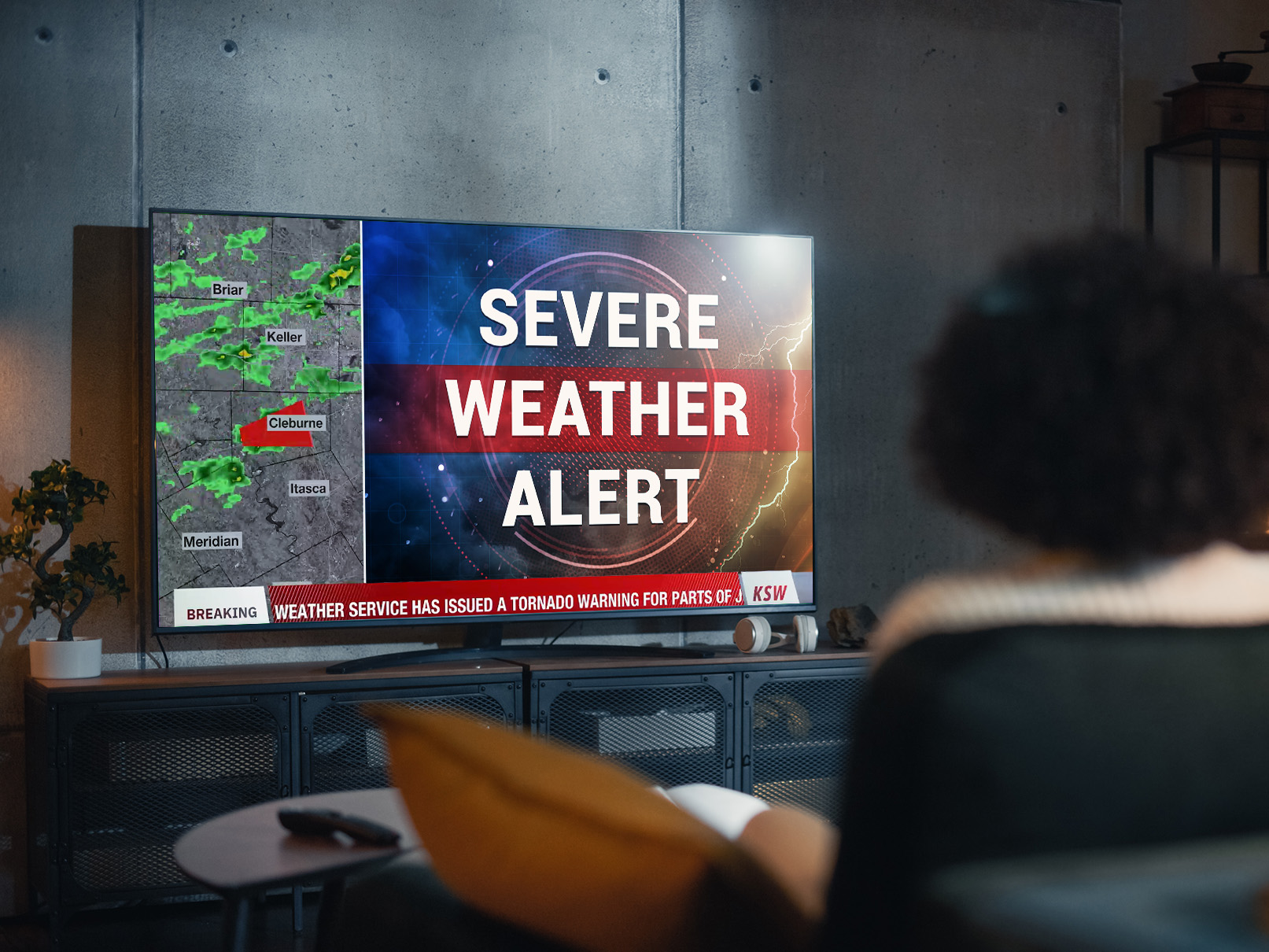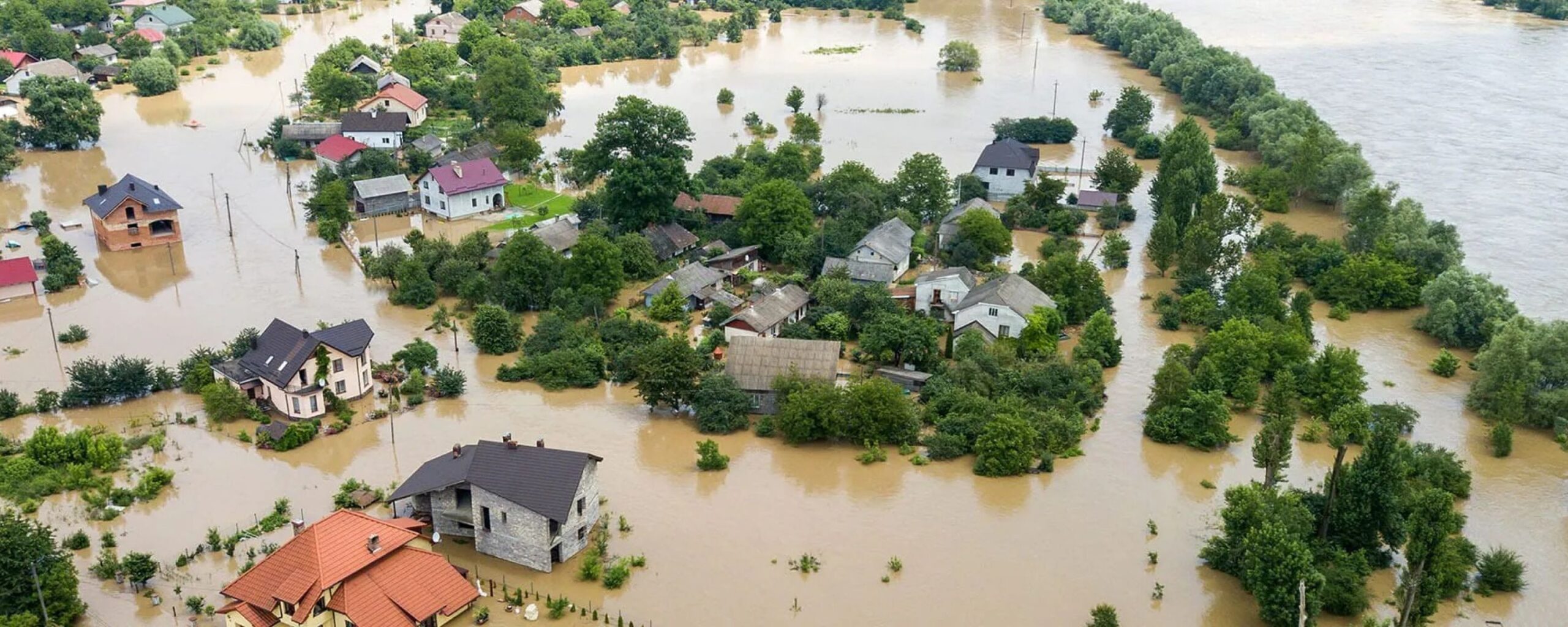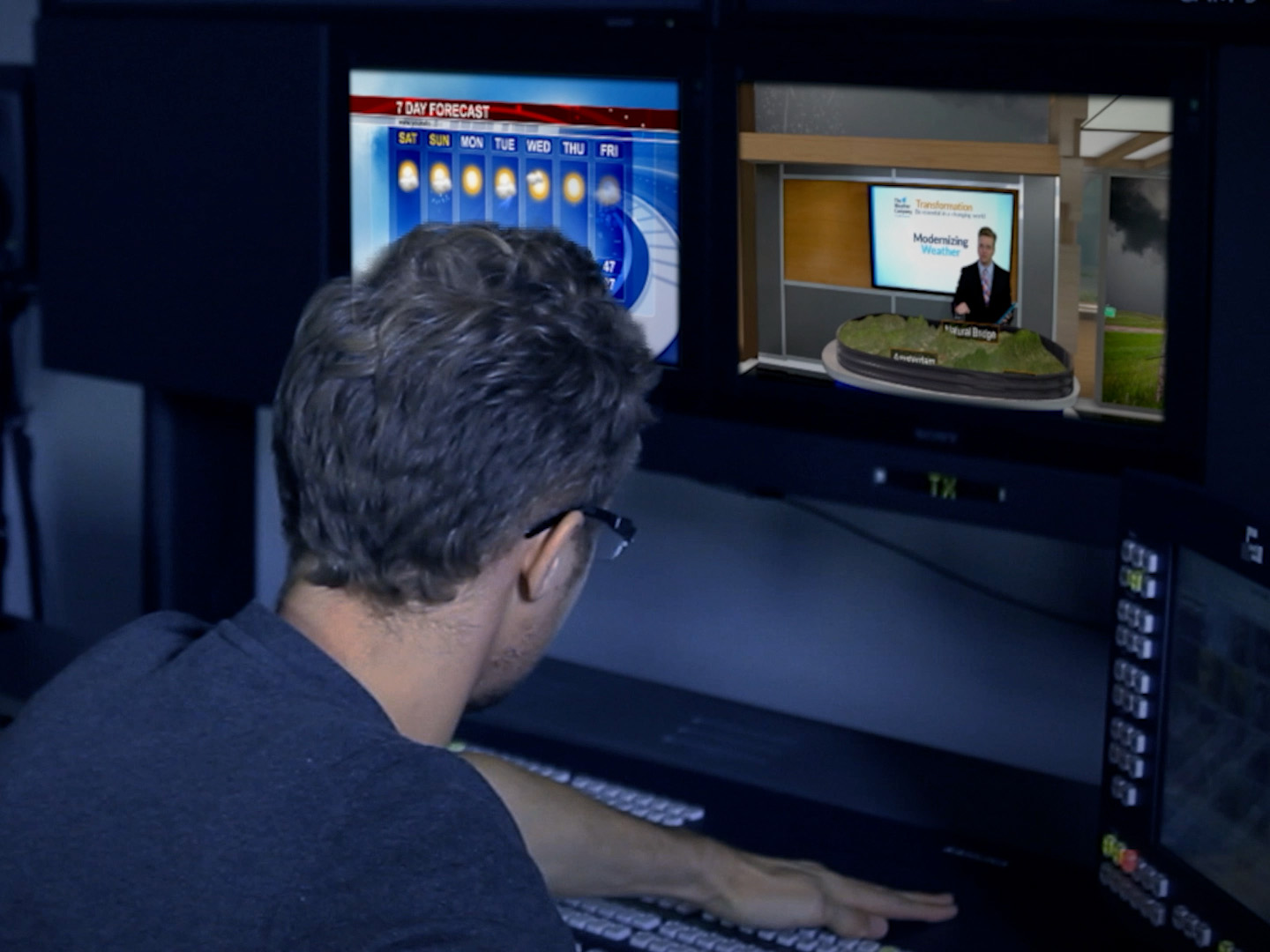Weather intelligence for the future: Crafting a strategic enterprise approach to changing environmental conditions
Continue readingEmergency alert software plays an important role for weather broadcasters, serving as a critical tool for disseminating timely and potentially life-saving information during severe weather events.
However, not all emergency alert software is made equal. The effectiveness of these systems hinges on their design, features, and integration capabilities. To make an informed decision when choosing the best emergency alert software, it’s crucial to understand its multifaceted applications.
What is emergency alert software used for?
Emergency alert software helps bring severe weather alerts and warnings to the air. The software integrates with your existing broadcasting systems to deliver automated notifications from the National Weather Service to local audiences. These alerts can be delivered via TV broadcasts, email, text, push notifications, and a variety of other channels. According to Weather Company research done with Magid, about 75% of viewers check their local broadcast or mobile alerts for convenient and trusted information during severe weather. Thus, it’s important to employ software that delivers the message to where your audience is.
Sophisticated software ensures severe weather alerts pop up on viewers’ radars in real time. Handling this manually is nearly impossible, especially with the amount of platforms requiring content and the need for repeated updates as events evolve. Emergency alert software automates severe or dangerous weather notifications, freeing up broadcasters to focus on delivering additional instructions and context. The software also supports ongoing coverage by streamlining the creation of maps and other visuals when time is of the essence.
How does emergency alert software work?
A wide range of emergency alert software is available, each with varying features and capabilities. However, its fundamental purpose remains the same: rapidly communicating critical information during severe weather events.
Emergency alert software enables you to:
Design alerts
Effective emergency alert software allows you to design alerts that capture attention and deliver information clearly for TV broadcast viewers. The visual appeal of alerts is crucial, ensuring that viewers immediately grasp the severity, location, timing, and nature of the weather event. Sound also plays an important role—viewers should immediately know that an important alert is occurring.
Set trigger conditions
Customizing trigger conditions is essential. Emergency alert software should enable you to set specific conditions that automatically activate alerts. Some common trigger conditions could include hazardous air quality, hurricanes, tornadoes, and landslides. Setting these triggers ensures a proactive approach, informing your audience without manual intervention. These alerts can be deployed manually or automatically based on the severity level. When no internet is available, these conditions should be able to trigger locally.
Test alerts regularly
Regular testing is a key component of emergency alert preparedness. Your chosen software should facilitate easy and frequent testing to ensure alerts function as intended. This includes checking the visual elements, message delivery, and overall effectiveness.
Where can emergency weather alerts be transmitted?
Emergency weather alerts are only helpful if they can reach their target destination. Being able to transmit these alerts in a timely fashion across multiple channels, such as television broadcasts and mobile app push notifications, helps ensure audiences remain aware of hazardous weather conditions.
Weather broadcasts
Emergency weather alerts are a staple of weather broadcasts. The software should seamlessly integrate with your broadcasting systems, allowing for the swift dissemination of critical information to your audience.
Mobile alerts
In an era of digital connectivity, smartphones are a primary source of information for many individuals. According to Magid, 38% of viewers check their smartphones during severe weather due to ease and speed. Ensure that your emergency alert software extends its reach to mobile alerts, maximizing the dissemination of crucial information.
OTT
More and more viewers are engaging with over-the-top (OTT) media services as a way to consume information. According to Magid, OTT goes beyond broadcasts, with 40% of viewers using a streaming device as a primary source for watching the weather via TV. It’s crucial to have a disaster alert system that can convey emergency alert information through OTT channels.
9 features to look for in emergency alert software
Investing in emergency alert software requires a careful consideration of features to ensure optimal functionality. Without prioritizing these features, your organization can encounter unforeseen issues that prevent audiences from receiving timely weather updates when they need them most.
Let’s look at nine of the top features to look for when evaluating emergency alert software.
1. Automated alerts
Automated weather alerting, supported by advanced technology, is a cornerstone of effective emergency messaging software. It covers everyday weather forecasts and proves invaluable during severe storms. Automated alerts are low-maintenance, ensuring accurate and up-to-date information for your broadcasts. They enhance safety, keep viewers informed, and contribute to higher engagement rates.
2. Customizable weather graphics
Visual representation is key in weather broadcasting. Look for emergency alert software that offers customizable weather graphics. These graphics should provide a clear and engaging visual representation of weather forecasts, providing viewers with detailed information about storm locations and other relevant extreme weather events.
3. Comprehensive weather map
A robust weather map feature is essential for conveying complex meteorological data to your audience. Weather map software should allow meteorologists to effectively create, analyze, and visualize data such as distinct area maps. In the case of severe weather, creating a hurricane track can serve as a supplement to details such as position, wind speed, or direction that help keep your viewers informed on the latest storm status. These weather maps can also be used to display what areas should be evacuated or information on a local level. All without pre-rendering or having to employ another graphics system. An efficient emergency alert software can go beyond alerting and the standard crawl. It should be a valued asset in your toolkit.
4. Cloud capabilities
Cloud capabilities in emergency alert software are game-changers, enabling broadcasters to create and publish high-quality videos from any location with an internet connection. This feature should also offer a streamlined interface for user-friendly navigation, facilitating easy formatting for various platforms and creating visually compelling graphics. This cloud-based approach also elevates the quality of content delivery, ensuring that critical alerts are disseminated effectively across different channels.
Cloud technology fosters real-time collaboration, allowing broadcasters and meteorologists to collaborate seamlessly. This collaborative environment facilitates swift decision-making and adjustments to content, ensuring that emergency alerts are visually engaging and up-to-date.
5. Simple & efficient user interface
User-friendliness is crucial in emergency alert software. A simple and efficient user interface ensures that your team can navigate the software seamlessly, reducing the learning curve and minimizing the risk of errors during live broadcasts. In critical moments, the importance of a straightforward and responsive user interface cannot be overstated, ensuring that broadcasters can focus on delivering accurate and timely information to the public.
6. Brand compatibility
Consistency is key in branding. Beyond timely alerts, the software should seamlessly integrate with your brand guidelines, ensuring the messaging aligns with your established tone and identity. This consistent branding fosters a sense of reliability, reinforcing your viewers’ trust in the information you provide during critical moments. A focus on branding through the use of tools like broadcast templates helps present alerts in a way that resonates with your audience and reinforces the credibility of the broadcasted emergency information.
7. Language support
Language support in emergency alert software goes beyond translation; it ensures that your critical messages resonate with diverse communities. Seek software that offers multilingual capabilities and considers cultural nuances, making your alerts more accessible and impactful. This inclusive approach ensures that a broad and diverse audience understands your emergency information.
8. Accuracy
Accurate weather forecasting is the backbone of reliable emergency alerts. Short-range and long-range forecasts should be supported, integrating with reputable sources like the National Weather Service to ensure precision. Accurate alerts help establish the credibility of your broadcast and build trust with audiences. In a study by Forecast Watch from 2017 – 2022, they found that The Weather Company has the most accurate weather forecasting technology.
9. Third-party data integration
Comprehensive emergency alert software goes beyond just weather alerting. It can also ingest and display third-party data within the crawl, such as school closings, sports scores, or headlines for added value.
Invest in custom emergency alert software with Max Alert Live
Choosing the right emergency alert software involves careful consideration of features, functionality, and integration capabilities. To keep your audience safe, consider Max Alert Live. This comprehensive solution provides customizable, automated weather alerts that can be controlled from virtually anywhere. Max Alert Live also goes beyond traditional alerting, allowing accurate information to be displayed efficiently and effectively across platforms.
Let's talk
To learn more about how Max Alert Live can keep your viewers safe through timely alerts and notifications, contact our media experts today.
Contact us




